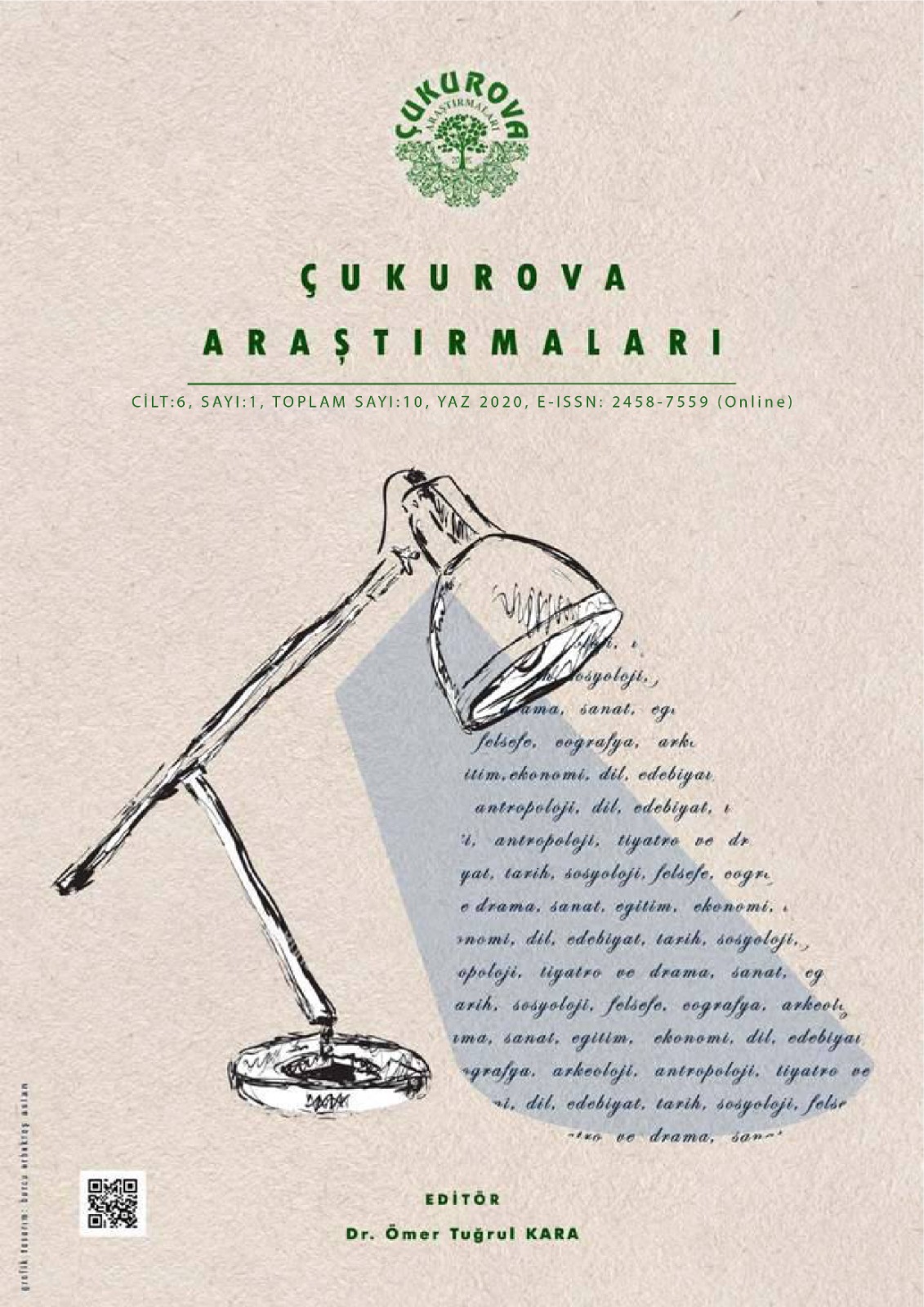Author :
Abstract
Kilis, Akdeniz Bölgesi’nden Güneydoğu Anadolu Bölgesi’ne geçiş yeri olup Suriye ile komşu bir serhat şehridir. Kilis, doğası ve yerleşmeye elverişli coğrafyası nedeniyle tarihî süreç içerisinde pek çok kavme (Babil, Hitit, Huri-Mitanni, Arami, Asur, Pers, Makedonya, Bizans, Selçuklu, Memluk/ Kölemen, Osmanlı) ev sahipliği yapmıştır. İlk olarak VIII. yüzyılda bölgeye öncü birlikler gönderen Türkler, 1071 Malazgirt Zaferi'nden sonra bölgenin mutlak hâkimi olmuşlardır. Bir geçiş güzergâhında bulunan bölgeye yerleşen Türkmenler, ata yurttan getirdikleri kültürel değerlerini koruyarak günümüze kadar getirmişlerdir. Bu kültürel değerlerden biri de mitlerin parçalanmış şekilleri olarak kabul edebilen masallardır. Masallar zaman içerinde yayıldığı coğrafyanın ve kültürün birçok özelliğini bünyesine alarak genişlediği gibi kültürel yozlaşmaya uğrayarak birçok özelliğini de kaybeder. Masalın bünyesine yeni motifler girdiği gibi masalın esasını teşkil eden belirgin birçok motif de kaybolabilir. Ancak masalın esasını oluşturan mitik unsurlar belirli bir zorlamaya maruz kalmadıkça varlığını korur. Bu çalışmada; Kilis’ten derlenen masallarda karşımıza çıkan mitik dünyanın bir sembolü olan yeraltı dünyasıyla ilişkili unsurlar incelenmiştir. “Kilis Masalları Derleme ve İnceleme” adlı eserdeki 44 masal metni araştırmaya dâhil edilmiştir. Nitel araştırma yönteminin benimsendiği bu çalışmada doküman incelemesinden faydalanılarak içerik analizi yapılmıştır. Böylece masallarda geçen yeraltı dünyasına ait unsurlar (yeraltı dünyasındaki canlılar, yeraltı dünyasının özellikleri, yeraltı dünyasıyla temas ve yeraltı dünyasından çıkış) tespit edilmiştir.
Keywords
Abstract
Kilis is a passageway from the Mediterranean Region to the Southeastern Anatolia Region and a border city neighbouring Syria. Kilis, hosted numerous tribes (Babylon, Hittite, Huri-Mitanni, Arami, Assyrian, Persian, Macedonia, Byzantine, Seljukian, Mameluke / Kölemen, Ottoman) because of its nature and geography that made settlement favorable. First, VIII. Turks, who sent pioneering troops to the region in the 16th century, became the absolute rulers of the region after the 1071 Manzikert Victory. The Turkmen who settled in the region on a crossing route have preserved their cultural values brought from the country to the present day. One of these cultural values is fairy tales, which can accept them as fragmented forms of myths. Tales can both expand incorporating various features of the culture and geography they spread over time and also can lose many features through cultural deterioration. New motives may join in the constitution of tales or plenty of distinct motives that constitute the basis of tales may disappear. Yet, the mythical elements that form the basis of tales maintain their existence unless they are exposed to a certain pressure. In this study, the elements related with the underworld which is a symbol of the mythical world that appear in the tales compiled from Kilis were mentioned. 44 tale texts were included into the research from the work Compilation and Analysis of Kilis Tales. The study adopted qualitative research method and content analysis was carried out through document analysis. In this way, the elements of the underworld in tales (living things in the underworld, the attributions of the underworld, contact with the underworld and exit from the underworld) were establishes.
Keywords
- Alptekin, A. B. (1990, Kasım). Çukurova masallarında destani özellikler var mıdır?. I. Uluslararası Karacaoğlan ve Çukurova halk kültürü sempozyumu, Adana.
- Bakırcı, N. (2014). Eflâtun Cem Güney’in “Masallar” adlı kitabında yer alan metinlerde mitolojik unsurlar. Türük uluslararası dil, edebiyat ve halkbilimi araştırmaları dergisi. 2(4), 37-52.
- Campbell, J. (2000). Kahramanın sonsuz yolculuğu (S. Gürses, Çev.). İstanbul: Kabalcı Yayınları.
- Çolak, F. (2010). Yerle ilgili bazı atasözleri ve deyimlerin mitolojik bağlantısı. Türklük bilimi araştırmaları (TÜBAR). (28), 171-181.
- Çoruhlu, Y. (2002). Türk mitolojisinin ana hatları. İstanbul: Kabalcı Yayınları.
- Dilek, İ. (2010). Sibirya Türk destanlarında kahramanın yeraltı ve gökyüzü dünyalarıyla ilişkileri üzerine bazı tespitler. Milli folklor. 22(85), 46-56.
- Dilek, İ. (2014). Resimli Türk mitoloji sözlüğü(Altay-Yakut). Eskişehir: Eskişehir Valiliği.
- Doğramacıoğlu, H. (2011). Kilis masalları derleme ve inceleme. Kilis: Kilis Kültür Derneği Yayınları.
- Duymaz, A. (1998). Anadolu ve Balkan Türklerinin halk anlatmalarında mitolojik bir kuş: Zümrüdü Anka. Balıkesir Üniversitesi Sosyal Bilimler Enstitüsü Dergisi. 1(1), 91-97.
- Eliade, M. (1999). Şamanizm (İ. Birkan, Çev.). Ankara: İmge Kitabevi.
- Ekici, M. (2005). Türk sözlü geleneğinde anlatıcılar ve anlatmalar arasındaki ilişkiye art zamanlı (diyakronik) ve eş zamanlı (senkronik) bir bakış. Ed. G. Gülsevin Prof. Dr. Fikret Türkmen armağanı. İzmir: Kanyılmaz Matbaası.
- Lvova, E. L., Oktyabrskaya, Ġ. V., Sagalayev, A. M. ve Usmanova, M. S. (2013). Güney Sibirya Türklerinin geleneksel dünya görüşleri, simge ve ritüel (M. Ergun, Çev.). Konya: Kömen Yayınları.
- Ögel, B. (1995). Türk mitolojisi C.I. (Kaynakları ve açıklamaları ile destanlar). Ankara: Türk Tarih Kurumu Basımevi.
- Öztürk, A. (1980). Çağlar içinde Türk destanları. Ankara: Emek Matbaacılık ve İlancılık Limited Şirketi.
- Sabuncuoğlu, A. E. (2013). Kilis ilinde geçiş ritleri bağlamında evlenme. (Yayımlanmamış Yüksek Lisans Tezi). Gaziantep Üniversitesi Sosyal Bilimler Enstitüsü, Gaziantep.
- Sakaoğlu, S., Alptekin, A. B., Sakaoğlu, Y. ve Şimşek, E. (1999). Meddah Behçet Mahir’in bütün hikâyeleri II. Ankara: Atatürk Kültür Merkezi Başkanlığı Yayınları.
- Sakaoğlu, S. ve Duymaz, A. (2011). İslamiyet öncesi Türk destanları (incelemeler-metinler). İstanbul: Ötüken Yayınları Yayınevi.
- Seyidoğlu, B. (2009). Yeraltı dünyası. Atatürk Üniversitesi Türkiyat Araştırmaları Enstitüsü Dergisi (Prof. Dr. Hüseyin Ayan özel sayısı). (39), 201-210.
- Türk Dil Kurumu (1998). Türkçe sözlük. Ankara: Türk Dil Kurumu Yayınları.
- Türkeş-Günay, U. (2009). Türk masallarında geleneksel ve efsanevi yaratıklar. Motif akademi. 2(3), 84-115.
- Uluışık, Y. P. (2015). Türk destanlarında yeraltı dünyası (Sibirya sahası) (Yayımlanmamış Doktora Tezi). Gazi Üniversitesi Sosyal Bilimler Enstitüsü, Ankara.





